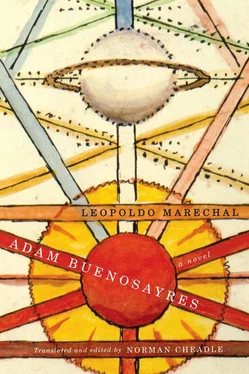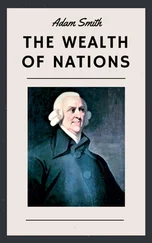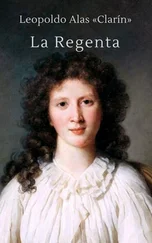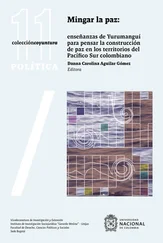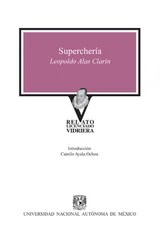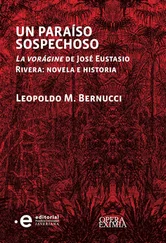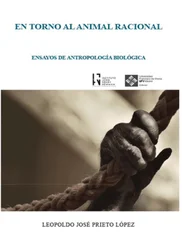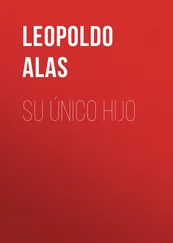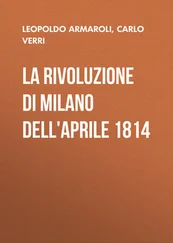126 This particular sentence is quoted in Abós’s biography of Natalio Botana titled El tábano (1921) [The Gadfly] in support of his claim that Marechal’s infernal episode is “one of the most lucid texts” ever written about the Argentine Citizen Kane, as Abós (11) characterizes him, noting that the word tábano is an anagram of Botana (7).
127 “The Thief in His Forest of Bricks”: the title of a novel projected by Arlt but never written. Pedro Juan Vignale announced it as Arlt’s next novel in his literary column “Autores y Libros” of 29 June 1930 in El Mundo (Saítta 76).
128 Navascués ( AB 670n) finds a note by Marechal indicating that Walker is based on Roberto Arlt (1900–1942), who worked as a journalist at El Mundo with Marechal and also for Botana at Crítica . Arlt’s vivid Aguafuertes porteños (1933) [Etchings of Buenos Aires] were originally written for the newspaper. However, Walker the Red seems less like Arlt himself than a possible character from one of his raw, powerful novels, Los siete locos (1929) [The Seven Madmen] and Los lanzallamas (1931) [The Flame-Throwers].
129 An approximation of Matthew 18:6.
130 Matthew 18:3.
131 The idiom tener cola de paja means “to feel guilty or at fault,” as in the proverb: “El que tiene cola de paja no debe acercarse al fuego” [he who has a tail of straw shouldn’t get too close to the fire].
132 In Greek mythology, Euterpe is the muse of music.
133 This would be the location of the Amundsen house, setting of the tertulia episode in Book Two, chapter 2. In historical reality, the house at the corner of Tronador and Pampa in the barrio Villa Urquiza belonged to the Lange family (see 639n16).
134 The image occurs at least twice in Borges’s early poetry: first in the poem “Calle con almacén rosado” (in Luna de enfrente , 1925); after walking all night, the poet comes upon a street corner with a general store tinged pink by the dawn light; the poem is an ode to the city of Buenos Aires (Borges OC I, 57). And again in “Fundación mítica de Buenos Aires”: “Un almacén rosado como revés de naipe… el almacén rosado floreció en un compadre, / ya patrón de la esquina, ya resentido y duro” ( OC I, 81). In Alistair Reid’s translation: “A general store pink as the back of a playing card… the corner bar flowered into life as a local bully, / already cock of his walk, resentful, tough” (Borges, Selected Poems 49). Gin is the preferred drink of traditional gauchos and tough suburban compadres .
135 The early Borges got these spellings from gauchesque poetry, which attemped to reflect the colloquial speech habits of rural Argentina.
136 A glamorous café on the avenida de Mayo in the heart of Buenos Aires, frequented by famous writers, artists, and musicians. La Peña del Tortoni, inaugurated in 1926 by Benito Quinquel Martín, was a famous literary and cultural discussion group that met in the café basement. Marechal, in his oral memoire, recalls fêting Luigi Pirandello at the Tortoni, and that Ricardo Güiraldes brought Carlos Gardel there to sing. But things could get rowdy. Marechal also remembers alcohol-inspired hijinks, such as a caper involving Evar Méndez (editor of Martín Fierro ), Marechal, and others: they barged in carrying Norah Lange on a chair stolen from a nearby café, noisily went downstairs, and broke up a poetry recital in progress (Andrés 23–4).
137 The cult of the metaphor is typical of ultraísmo , the avant-garde poetics brought by Borges to Argentina in the early 1920s. The first and fourth principle of this poetics, as theorized by Borges, were “the reduction of lyric poetry to its primordial element: the metaphor”; “the synthesis of two or more images in one, which thus enlarges the scope of suggestivity” (Salas, Estudio preliminar viii). Borges, Marechal, Eduardo González Lanuza, Francisco Luis Bernárdez, and Oliverio Girondo practised ultraísmo .
138 Both lines are from Marechal’s own poetry. The first is from “Poema sin título” ( Días como flechas , 1926; OC I, 93–4). The second is from the poem “Elogio,” published in the magazine Caras y Caretas (issue 1446, 19 June 1926; OC I, 476).
139 A slight variant on a line in “Balada para los niños que serán poetas” [Ballad for children who will be poets] in Días como flechas ( OC I, 105–6).
140 Navascués ( AB 686n) opines that the tunicked pipsqueak parodies Horacio Schiavo (1903–1978), a Catholic poet and friend of Marechal.
141 Boedo is a working-class street whose name was informally adopted by a group of 1920s leftist writers who considered literature to be a form of social and political engagement, as opposed to the rival Florida group, whose literary concerns were with avant-garde aestheticism. The dyad Boedo-Florida has been argued over for decades in Argentina, with no absolute consensus as to who belonged to which group — or even if the division into two rival movements has any validity. Borges, in a gesture typical of him, simply denied the existence of any Boedo group as such. Marechal, in later life, said several times (according to Horacio Salas) that the Boedo-Florida polemic was “almost an invention” designed to generate publicity (Salas, Memoria 231). Recently, Ojeda Bär and Carbone have postulated a “Third Zone,” whose writers fluctuated between the two groups without belonging to either (Ojeda 26–8). But see also Candiano and Peralta’s excellent book Boedo (2007), subtitled a “History of the First Cultural Movement of the Argentine Left.”
142 Erato: in Greek mythology, the Muse of love poetry.
143 Juan Moreira (see 649n28).
144 Barranca abajo [Down the Ravine] (1905), a tragic drama, is the best-known work of Uruguayan playwright Florencio Sánchez (1875–1910).
145 Juan José (1895) a tragic melodrama with a social message by Spanish writer Joaquín Dicenta Benedicto (1862–1917); Barcia (900n) notes that the play was popular in 1920s Buenos Aires.
146 Spanish translation of La cena delle beffe (1909; The Jesters’ Supper) by Italian writer Sem Benelli (1877–1949), a melodrama set in Renaissance Florence and immensely popular in Italy, France, England, the United States, and apparently in Buenos Aires, where a Spanish translation was published in 1925.
147 Teatro Astral, located at 163 °Corrientes Avenue in Buenos Aires, specializing in review theatre of mass appeal.
148 Terpsichore: in Greek mythology, the Muse of dance.
149 Thalia: in Greek mythology, the Muse of comedy and idyllic poetry.
150 As Navascués ( AB 690n) recalls, the False Thalia’s recipe parodically condenses Alberto Vacarezza’s celebrated formula for the sainete . In his La comparsa se despide (1932) [The Boys in the Band Say Goodbye], a character explains it in lunfardo -laced language to a North American tourist: “Poca cosa: / un patio de conventiyo, / un italiano encargado, / un yoyega retobado, / una percanta, un vivillo. / Dos malevos de cuchillo, / un chamuyo, una pasión, / choques, celos, discusión, / desafío, puñalada, / aspamento, disparada, / auxilio, cana y telón” (Néstor Pinsón, “Alberto Vacarezza.” Todo Tango online). [Nothing to it: a tenement building courtyard, / an Italian superintendent, / a riled-up Galician, / a broad, a wise guy. / Two hoodlums with blades, / conversation, passion, / conflict, jealousy, argument, / challenge, knife-thrust, / hand-wringing, flight, / help, cop, and curtain] (my translation).
151 Cf. Marechal’s poem “A Belona” [To Bellona] in the third edition in 1944 of Odas para el hombre y la mujer (first edition, 1929), as noted by Navascués ( AB 692n). The Roman goddess of war was a motif in Marechal’s work of the mid-40s; also from that period is an unpublished play, Muerte y epitafio de Belona , consulted by Navascués at the Fundación Leopoldo Marechal, whose plot is similar to the story told by the Man with the Intellectual Eyes, though with variations. Moreover, the goddess Bellona is a character in La púrpura de la rosa (1701), the first opera composed and mounted in the New World in Lima, Peru (music by Tomás de Torrejón, based on a comedy by Spanish Golden Age playwright Calderón de la Barca).
Читать дальше
